Well, to explain my befuddlement, please allow me to digress for a brief history of libraries...
In the beginning...
 Cuneiform (British Museum)
Cuneiform (British Museum) The earliest libraries were housed in the temples of Sumer, a region of city-states in Mesopotamia. They housed:
- commercial accounts (who sold how many goats to whom and at what price);
- math and grammar lessons for young scribes (No, my young scribawan, the correct usage is I couldn't care less, not I could care less);
- medical and astrological treatises; and
- collections of hymns, prayers and incantations.
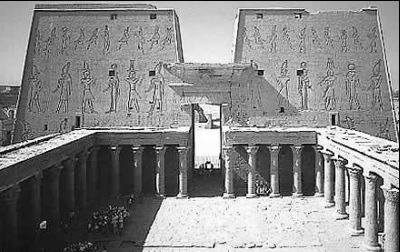 Temple at Edfu (Ancient-Egypt.org)
Temple at Edfu (Ancient-Egypt.org) If it's a temple, then I must be a Goddess...
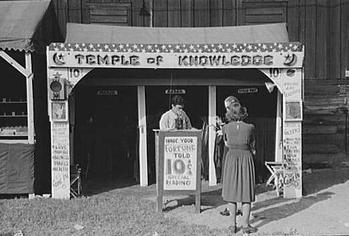 (courtesy ancestry.com)
(courtesy ancestry.com)  Ranganathan and his laws
Ranganathan and his laws So, over time and with the brilliant innovations of a few smart librarians following the Laws of Ranganathan and the organizational system of Melvil Dewey (or Library of Congress, if you're in academia) and bolstered by the monetary input of at least one capitalist with a thirst for knowledge and a taste for philanthropy of the intellectual kind, the idea of a library has evolved into being more of a market place. And the buildings and their accouterments changed to reflect that notion. Andrew Carnegie (btw, that's Car-NEG-ie, not CAR-ne-gie), who provided millions to build public libraries in towns across the United States, was also a smart businessman who kept his eyes on his pennies. To reduce operating costs in the branch libraries in his native Pittsburgh, his directors introduced the "open stack" policy, a revolutionary idea of "self-service" in which patrons could access books directly, without having to approach the Reference Altar. John Cotton Dana pursued this same policy in the Denver Public library and other systems that he administered.
Books had become far more plentiful and easier to replace; the cataloging systems were easy to use and made locating material much more straightforward for the average person. Entering the stacks was no longer like entering the Holy Sanctuary, it was like entering Books R Us or Infomart.
Would you like some Nietzsche with your Kierkegaard?

Which, of course, led to exploration and the birth of Serendipity, who, unlike Venus, did not rise up out of the ocean on a clam shell wearing only her hair. (Serendipity the word was coined by Horace Walpole in 1754 and means "a fortunate happenstance" or "a pleasant surprise.") Indeed, it (or she, or he, however way you roll), as a library experience, blossomed in the midst of the freedom that patrons had to, in the words of Ranganathan, "wander among the books and lay his (or her) hands on any of them at his will and pleasure." Accompanied by Serendipity, in the course of looking for one book, a patron may find, just by chance, another even more suited to his (or her) liking. Or perhaps even two or three or an armful... Because you can't always know what you want, much less get it, unless you can take a look around. (And yes, I know that with the sophistication of our online PAC systems, you can "virtually" wander a shelf, but it's not quite the same thing, now, is it? And don't call me a Luddite. I love technology, I am comfortable with it, I teach it, I respect it, blah, blah, blah...)
Serendipity deepens the joy of using a library (there's one of those feeling words again) for patrons of all ages, from the pre-schooler stumbling upon Ruby and Max, those irrepressible bunnies created by Rosemary Wells, while on the hunt for the latest Pigeon book by Mo Willems to the tween who finds the fantasies of Emily Rodda while picking out the sequel to Rick Riordan's The Lightning Thief to the adult who might walk into a library looking for Gustave Flaubert's portrait of a bad marriage and went home carrying Gillian Flynn's as well. And it happens all the time in the nonfiction section as well. You stride purposefully down to the 551s section for books about tornadoes, only to have your eyes drawn to the stunning geode on a cover in 540s. And, of course, you just have to stop and peruse. (Or at least I do!)
Marian the robot librarian?
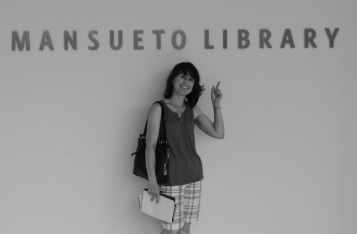
The Joe and Rika Mansueto Library, the self-proclaimed "library of the future," that's what.
The Mansueto Library, opened in 2011, is the newest library on the University of Chicago campus. It sits just to the west of old Regenstein, like a sparkling, many-faceted, oval-cut diamond tossed down next to a chunk of concrete. The Mansuetos, both alumni, provided a cool $25 million for its construction. Designed by Chicago architectural icon, Helmut Jahn, the library, constructed in the shape of an ellipse, is a stunning physical space and an engineering marvel, consisting of an 8,000 square foot "Grand Reading Room," a state-of-the-art preservation and digitization lab, and an underground Automated Storage and Retrieval System (ASRS) (the "stacks") with the capacity to hold 3.5 million volumes (or volume equivalents, as they put it).
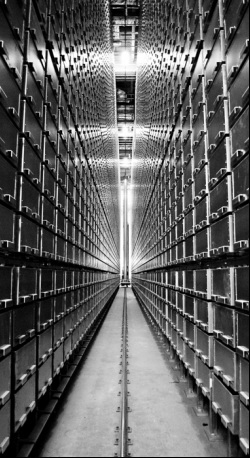
Patrons search for and request materials in the library's online catalog. A robotic crane swoops along a track, gathers up the correct bins where the books are located and shoots them up to the main floor circulation desk where patrons can check out the material. The whole process takes about 5 minutes or so.
A particularly unique feature about the ASRS is that the material is shelved by size, rather than library classification. Poor old Melvil is probably rolling over in his grave, because this is the way books were often stored before he came up with his classification system. Ah, progress...
Under the Dome...
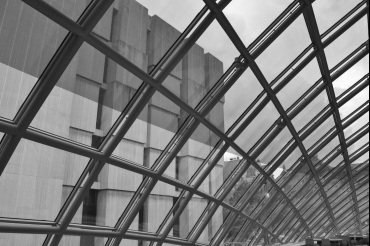
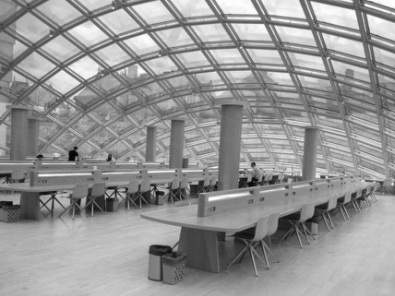
Preservation
Closed vs. Open Shelving:
A closed automated shelving system allows library materials to be stored at temperature and humidity conditions (60 degrees Fahrenheit and 30% relative humidity) that are ideally suited for their preservation but could not be achieved in open spaces where patrons browse and retrieve materials.
And I appreciate the efficiency. And I understand the "electronic open stacks" of digital image-based texts. Like I said, don't call me a Luddite. That's knee-jerk.
It's just that... as a library wanderer, in a place where "not all those who wander are lost," I feel the loss of serendipity.
Closed stacks = no wandering. No wandering = a limit on the possibility of every book finding its reader and every reader finding her book.
That seems kind of like ancient history to me.
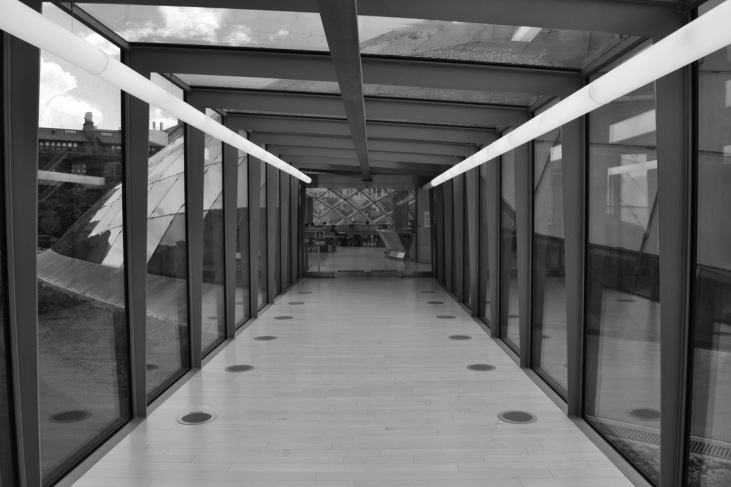
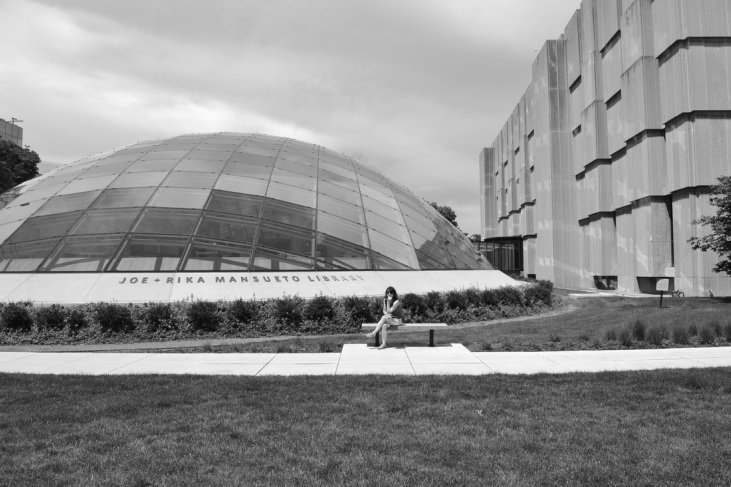
 RSS Feed
RSS Feed